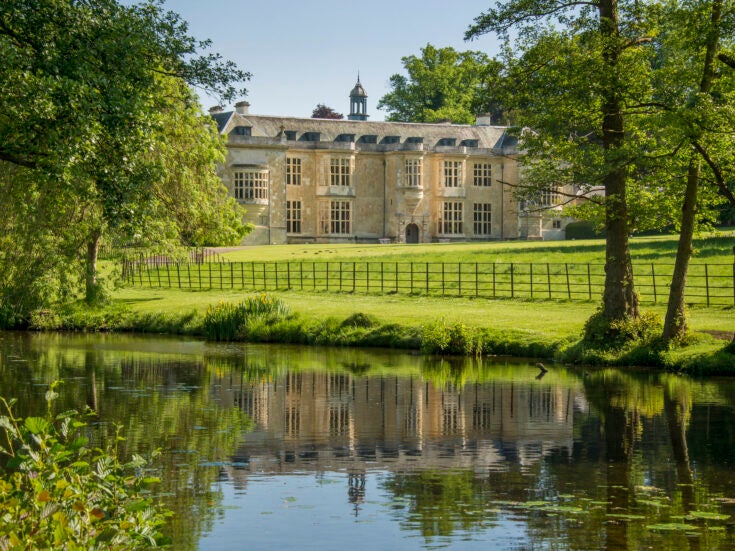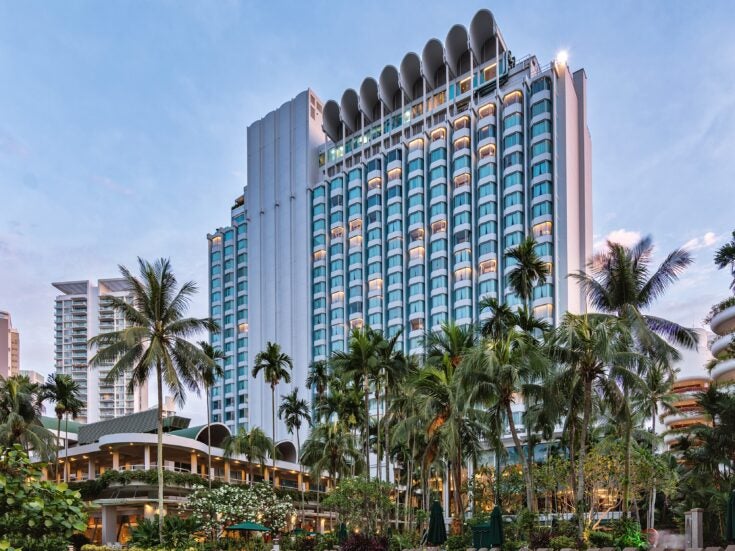Balls are big business in Vienna, and the Opera Ball is the biggest of all, with society’s movers and shakers turning up every year to, er, move and shake. Emily Rookwood reports
On a busy Swissair flight to Vienna this February past, every second guest looked like they were en route to the Vienna Opera Ball. The grandest of the 450 such occasions each year, it brings out the jewelled youth, the charmingly old-school and the ostentatiously wealthy in equal measure. A couple in their late sixties in the row in front of us, perusing plastic surgery brochures (clearly in the last category, wanting to be in the first), were later spotted dancing merrily on the expansive dance floor.
Every echelon of society in Vienna has its own ball — from the coffeehouse owners to the lawyers, the firemen to the wrestlers — but the Vienna Opera Ball, the official ball of the Austrian Federal Republic, towers above them in prestige, even though it only officially debuted in 1935. It nevertheless follows ancient traditions, where debutantes and their male companions process into the room to the sound of Ziehrer’s F’cherpolonaise before starting the first waltz of the evening, as men in tails and women in floor-length gowns watch the spectacle from the gilded boxes, festooned with fresh lilies and ribbons. It is captivating and, if somewhat anachronistic in its grandeur, what goes on at the ball shows that its waltzers have certainly moved with the times.
When the balls began, the opening ceremony was a chance for aristocratic families to debut their daughters in society. Today, the boys and girls come from a variety of backgrounds. Elisabeth G’rtler, director of the 450-year-old Spanish Riding School in Vienna, is an expert in ball culture, having organised the Vienna Opera Ball from 1999 to 2007. She says that ‘any young boy and young girl can apply for admittance to an opening committee of a ball’ as long as they can dance the waltz ‘left-hand-side’, a local peculiarity.
While debutantes need to be able to master the Viennese waltz to go to the ball, guests simply need to have enough money for the ticket and attire. An element of society still remains on the guest list, but the media prefer to focus on celebrity. This year, Katrin Glock (of the gun manufacturers) and Naomi Campbell, who was the only non-debutante to wear a white gown, hit the front pages, but most notable was the annual presence of Richard Lugner.
Lugner is an Austrian entrepreneur who made his money in the construction industry and now uses that money to raise his profile by having a conspicuously good time. Joan Collins, Pamela Anderson and Paris Hilton have all appeared as his guest, while last year Kim Kardashian, whom he had paid $500,000, stormed out after racist abuse from another guest. Lugner brushed the kerfuffle aside, complaining she had ignored him in favour of the cameras, and dubbed her ‘annoying’. This year, he paid Elisabetta Canalis, one of George Clooney’s many old flames, to attend with him; she, unfortunately, endured a waltzing-related wardrobe malfunction.
Speaking of waltzing malfunctions, dancing ranges from the professional to the enthusiastic, and as I careered around the dance floor, clinging on to my tall Swedish partner, we fell definitely into the second camp, crashing more than once into our fellow waltzers. They simply smiled and schunkeln-ed (a step used in waltzing to shuffle around any human obstacles).
Those connected to the ball politely play down both the importance of Lugner’s inelegant presence and also the corporate side, preferring to focus on the social aspects. However, political, financial and business opportunities are today a major part of the ball’s appeal. With the federal president, several ministers and key business leaders in attendance most years, this is Vienna’s supreme networking event. A former management consultant at the Opera Ball this year commented on how reminiscent the evening was of corporate entertaining, with businessmen exchanging cards over cocktails and groups being plied with champagne and expensive canap’s in the ’18,500 boxes.
Balls are businesses themselves — just think of what they do for Vienna’s florists and caterers. With growing numbers flying in from as far as Japan and America (some of them still under the illusion that Austria is ruled by an emperor) to attend the ball, the associated industries — hospitality, dance schools and limousine services — are piggy-backing on the excitement. There are more than 30 dance schools in the city, including Thomas Sch’fer-Elmayer’s Tanzschule Elmayer, which was founded in 1919 by his grandfather and is the top school in the city.
The Spanish Riding School, under the guidance of Elisabeth G’rtler, has recently launched its own ball, the F’te Imp’riale. Now in its sixth year, it is one of very few summer balls, combining ‘tradition with modernism’, and is quickly becoming a favourite, not least because it is more approachable, less austere than the Opera Ball. Its historic venue radiates glamour and the proceeds go towards protecting the school’s white Lipizzaner horses. So long as there is demand and opportunity, the ball calendar will continue to expand even further.
To meet demand, hotels are tailoring their offerings for avid waltzers. The recently opened Park Hyatt Vienna, located in an old bank and complete with gold-lined swimming pool in the vault, has a partnership with the Opera Ball and has launched a ‘Waltz at the Park’ package. It can arrange your tickets and, should you wish, you can request a VIP ball itinerary: you can be primped by its in-house team — this year stylist Wolfgang Reichel was at hand altering couture gowns for guests in one of the hotel’s grand suites — learn to waltz and enjoy a light supper in the Bank Restaurant before being whisked off in a limousine for the short ride to the venue.
On ball night, however, this journey takes several times longer than normal; the Ringstrasse crawls with thousands of people doing the exact same thing. According to our limousine driver, some will be paying up to ’400 just to drive 200 yards around the corner in order to step out on to the red carpet unfurled in front of the Opera House. As with all society events, appearances are everything — at least until guests leave the ball at 5am, when you’ll find many of them, ballgowns and all, huddled around a local sausage stand.
’
’
Emily travelled as a guest of Park Hyatt Vienna, where doubles cost from ’428 per night. A 50-minute private lesson at Elmayer Dance School costs from ’58 (for a couple or individual). For a list of balls, including ticket prices, visit events.wien.info. The Park Hyatt’s ‘Waltz at the Park’ package includes a double room and hour-long private waltz lesson for two at the Elmayer Dance School, from ’434.






